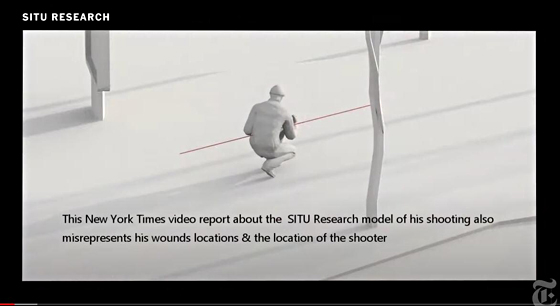
By John Perry & Rick Sterling, Antiwar, 5/26/22
This article shows how media uses computer modeling and “virtual crime scenes” to assign blame for some extremely important international events. In these examples from Nicaragua, Ukraine and Syria, many people died in complex circumstances. The deaths at the “Mother’s March” in Managua, Nicaragua precipitated an attempted coup. The Maidan Massacre in Kyiv led to an actual coup. The claims of a chemical attack in Douma led to the US, France and the UK bombing Syria….
Maidan Square, Kyiv, Ukraine, 20 February 2014
On February 20, 2014, 49 protesters and four police were killed at the central square known as Maidan in Kyiv, Ukraine. Many more were injured. The event led to the overthrow of the elected government and a radical change in national politics and policy. Who was responsible for the mass killings? Eight years later, there have been no convictions. How could this be, when there were dozens of videos, hundreds of victims and thousands of witnesses to a mass killing in the heart of a European capital?
Western media and the post-coup government blamed the security services of the previous Yanukovich government. Others claim the killings and chaos were organized by the militant opposition using snipers located in adjacent buildings, including the Hotel Ukraina and Arkada Bank.
After the killings and coup, a German news team visited. Their report quotes doctors saying that both police and protesters had been shot by identical bullets. The investigation was ongoing yet the newly appointed state prosecutor, a leader of the ultra-nationalist Svoboda Party, had already declared former President Yanukovich and Berkut police to be responsible.
Despite the state prosecutor’s efforts and numerous police being charged and imprisoned, there were no convictions.
In 2018, the New York Times (NYT) published a lengthy story titled “Who Killed the Kiev Protesters? A 3-D Model Holds the Clues”. It was accompanied by a video titled “Did Police Kill these protesters? What the videos show.” The NYT story reports that Ukrainian prosecutors enlisted the help of SITU Research, who built a replica of the street where protesters were shot, then did 3D modeling of the buildings, location of protesters, police, etc.. They analyzed dozens of actual videos then produced their own video concluding “In all three cases, individual officers can be seen aiming and firing their rifles during the moments leading to the victims’ deaths.”
The “virtual crime scene” analysis focuses on three individuals killed in the same area. In all three cases, based on bullet wound locations, SITU alleges that the fatal shots were fired from the direction of the police barricade. An audio analysis, based on the time difference of a shockwave versus firearm discharge, approximates the distance of the shooter.
Looked at casually or superficially, this appears to be compelling evidence.
However, Canadian Professor Ivan Katchanovski has done rigorous research on the Maidan Massacre and reveals that the SITU model misrepresented the location of wounds in all three cases.
- In the case of Igor Dmytriv, the wound locations are not level and straight as portrayed by SITU; they are from right to left, with a distinct downward angle. The video shows a hole in his shield near the right edge which also points to his shooting from Arkada Bank to the right, not the police barricade directly in front. The shield evidence disappeared before the trial.
- The wound locations are also misrepresented in the case of Andriy Dyhdalovych. As discovered by Katchanovski, “The 3d model moved the exit wound location from around the middle line of the back of his body in forensic medical and clothing examinations to the right and changed a steep top and bottom direction and 17 cm difference in height.” SITU misrepresented the wounds to match up with the direction of the police barricade. The actual wound locations point to the killer also being in the upper floors of the Arkada Bank.
- The third victim was Yuri Parashchuk: his wounds were also misrepresented. He was killed by a bullet to the back of his head. “The single bullet in the back right helmet area, and exit wounds in the back left area of his head (parietal region) in forensic examination mean that it was physically impossible to shoot him from the police barricade, contrary to the SITU model,” Katchanovski argues. The victim’s wife confirmed the gunshot wound locations.
The NYT story falsely characterized any critics as “pro-Russia sources” and “Kremlin-funded media.” University of Ottawa Professor Katchanovski has presented his findings to high interest before numerous academic conferences.
In addition to misrepresenting the body wounds, the “virtual crime scene” analysis ignores a crucial question: Who would have a motive to kill both protesters and police?
Read full article here.
It’s a psychological quirk of human thinking that if you create a cartoon of something, most people will treat it as if it was real evidence. We also saw this with TWA flight 800, and many other odd occurrences. The “drawing hand” style of video operates on a similar level.
This is an excellent report. It’s good to know that somebody is chasing down the truth, rather than just swallowing the lies.
The techniques used in the murders and coverup are very similar to the assassination of JFK(shot from the opposite direction than the direction of the patsy) and the Warren commission(magic bullet theory).